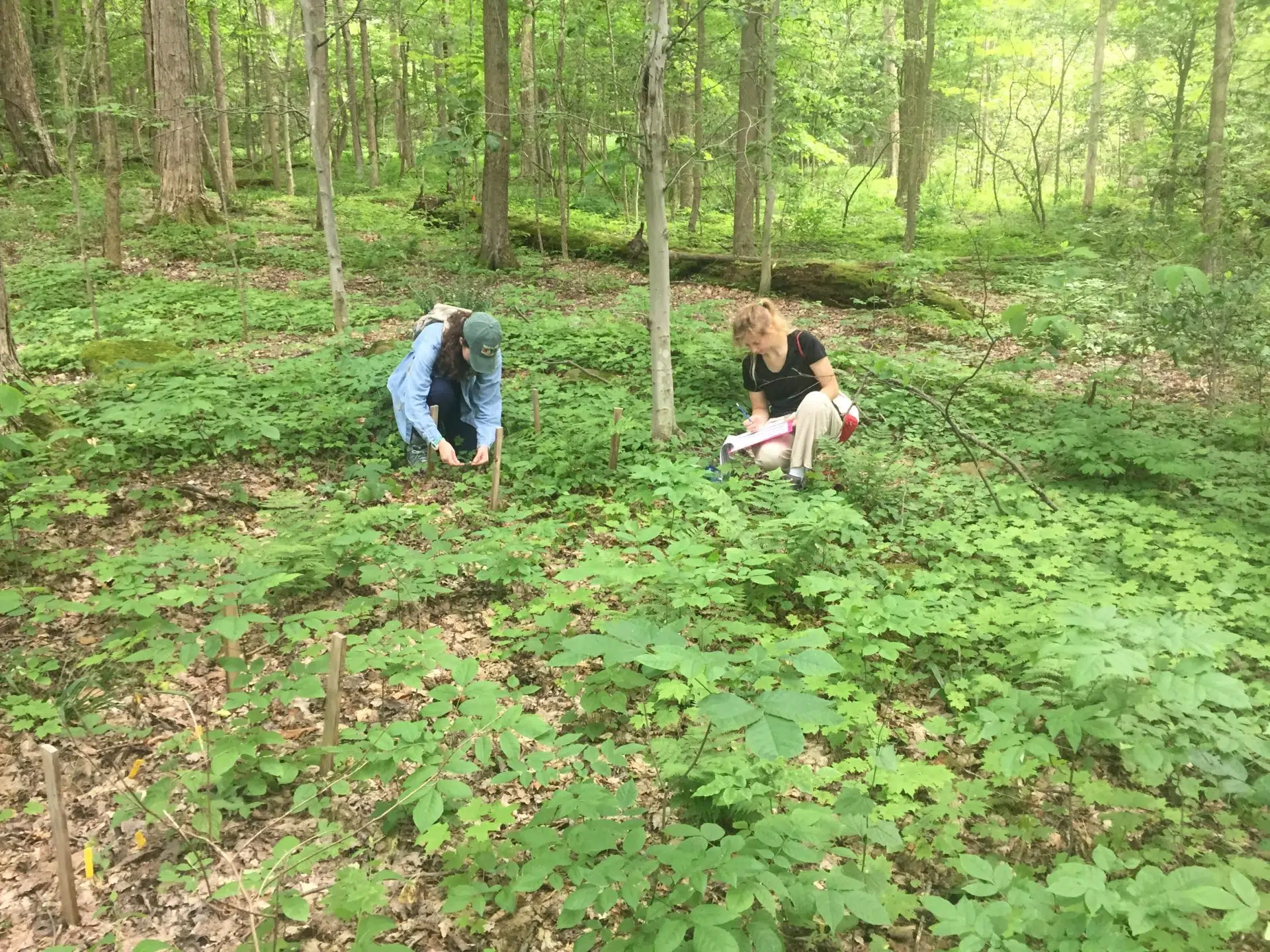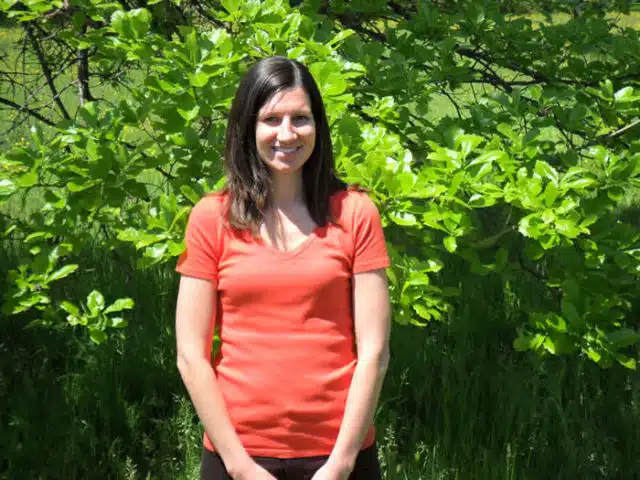Community Ecology, Soil and Microbial EcologyEcological integrity of forests
In progress
Question
What factors contribute to the integrity of forests, including belowground communities, and can restoration to the belowground communities improve the forest quality?
Project Summary
Global change phenomena are imminent and substantial threats to biodiversity. Such threats include invasive species, global warming, land use history, and predator decline and are often induced or exacerbated by humans. To date, most studies on how these phenomena influence ecosystems have focused on aboveground communities. We know far less about how global change phenomena influence belowground organisms. To investigate this question, scientists at HF&G have studied how agricultural land use history, invasive species, and deer herbivory have altered soil fungi and bacteria. Current research is focused on how restoring these belowground communities can help to reestablish plant communities that have also been affected by these global change phenomena.
Keywords
restoration, soil amendment, forest, wildflowers, soil chemistry, deer herbivory, soil
In the Field
Select Publications
- Paolucci A, ESJ Rauschert, SR Carrino-Kyker, and DJ Burke. 2021. Root fungal communities associated with better performance of an invasive spring ephemeral. Biological Invasions 23: 181-192. DOI: 10.1007/s10530-020-02364-9
- Heberling JM, and DJ Burke. 2019. Utilizing herbarium specimens to quantify historical mycorrhizal communities. Applications in Plant Sciences 7: e1223. DOI: 10.1002/aps3.1223
- Burke DJ, SR Carrino-Kyker, A Hoke, S Cassidy, L Bialic-Murphy, and S Kalisz. 2018. Deer and invasive plant removal alters mycorrhizal fungal communities and soil chemistry: Evidence from a long-term field experiment. Soil Biology and Biochemistry 128: 13-21. 10.1016/j.soilbio.2018.09.031
- Burke DJ, C Knisely, ML Watson, SR Carrino-Kyker, and RL Mauk. 2016. The effects of agricultural history on forest ecological integrity as determined by a rapid forest assessment method. Forest Ecology and Management 378: 1–13. DOI: 10.1016/j.foreco.2016.07.004
- Burke DJ, and CR Chan. 2010. Effects of the invasive plant garlic mustard (Alliaria petiolata) on bacterial communities in a northern hardwood forest soil. Canadian Journal of Microbiology 56: 81-86. DOI: 10.1139/w09-100
- Burke DJ. 2008. Effects of Alliaria petiolata (Brassicaceae – garlic mustard) on mycorrhizal colonization and community structure in three herbaceous plants in a mixed deciduous forest. American Journal of Botany 95: 1416-1425. DOI: 10.3732/ajb.0800184
https://www.sciencedirect.com/science/article/abs/pii/S0038071710004839?via%3Dihub
- Burke DJ, MN Weintraub, CR Hewins, and S Kalisz. 2011. Relationship between soil enzyme activities, nutrient cycling and soil fungal communities in a northern hardwood forest. Soil Biology and Biochemistry 43: 795-803. DOI: 10.1016/j.soilbio.2010.12.014

























